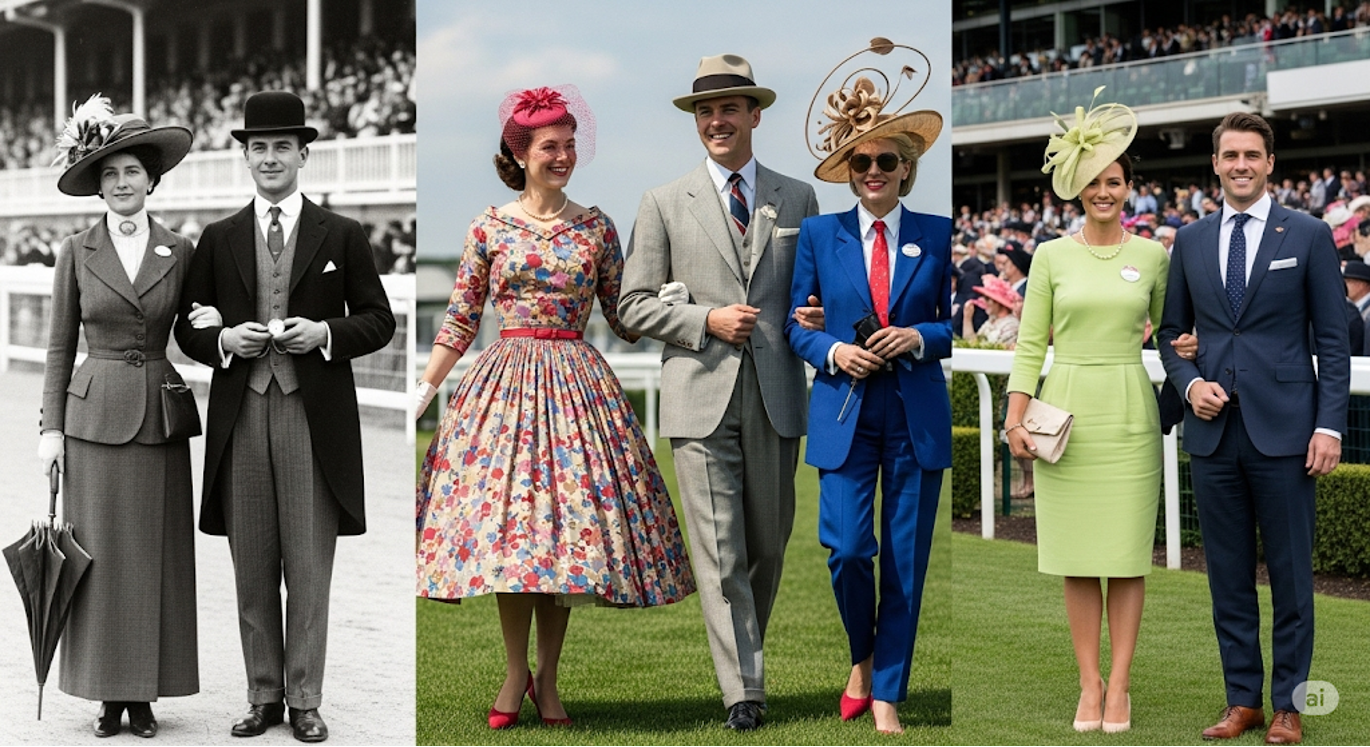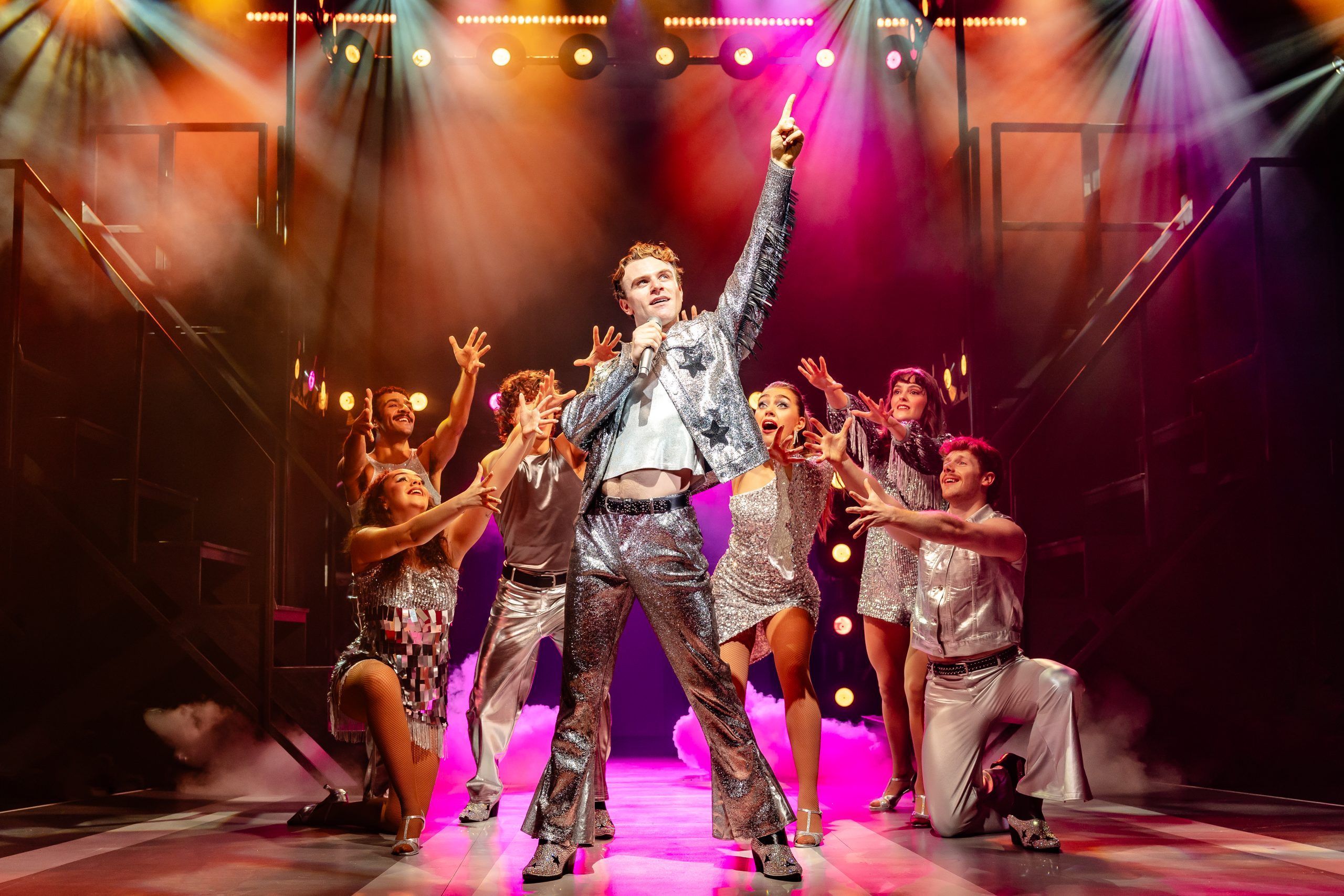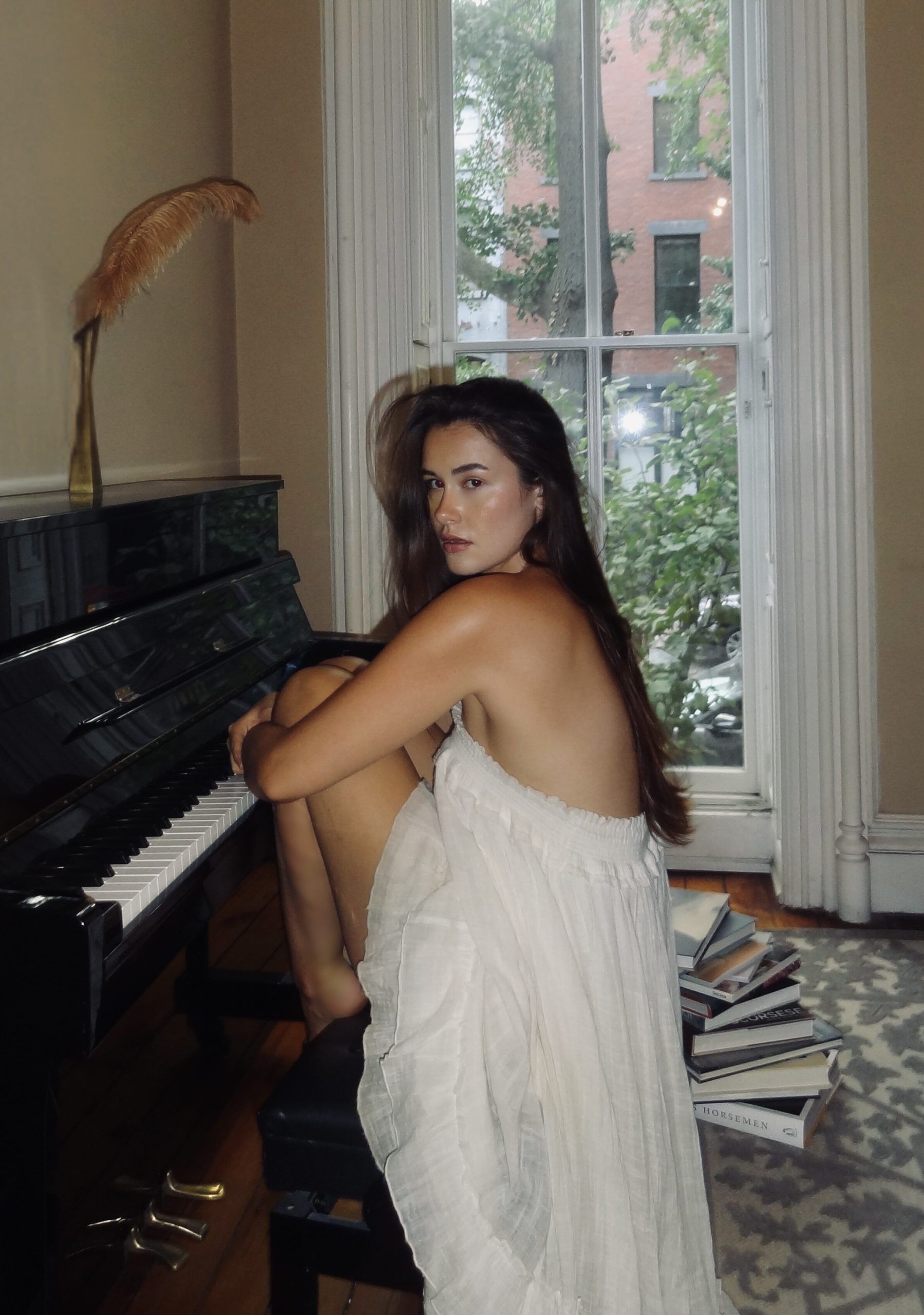
Image Credit – Gemini
The Genesis of Grandeur: From Aristocratic Tradition to Public Spectacle
Fashion and horse racing share a rich history, with sartorial elegance serving as a cornerstone of the sport’s identity. The fashion of the day has never been as simple as clothes in the days when horse race day became the Sport of Kings; it is a potent instrument of social branding and social perception management. Early on in the formative years of the Melbourne Cup and Royal Ascot, there was a form of formal attire that was purposefully utilized to boost the image of the sport. Strict dress codes, such as hats, gloves, and formal dresses, were introduced by the founders of races, such as the Kentucky Derby, to ensure the attractiveness of the events to an elite group and counter the negative reputation of the sport as a vice. This approach was effective in making horse racing an event looked forward to by society, and this has been the practice even to date. This grace reached its height in the Victorian and Edwardian periods, with women adorned with large skirts, corsets, and other fancy accessories such as ornamented hats and parasols. Such complex combinations were used not only to demonstrate wealth but also to finalize the high social status of a wearer. In the case of men, the suit and hat had become standard. This heritage of elegant dressing has today become an indivisible component of the race day, which means that the fashion of horse racing still holds the eyes and hearts of people.
A Century of Style: Evolution through Social and Cultural Change
Horse racing fashion has always been a curious image of social and cultural changes. Ever since the roaring twenties, race day fashion has grown beyond the image of rigid social conformism into a new image of individual style and expression. The history, influence of celebrities, and media make this trip a showcase of how fashion at the track is much more than what people wear; it is a living history of the national mood.
The elegant restrictiveness of the old after World War I was superseded by the liberating flapper dresses of the 1920s, an appearance that became symbolic of the newly found freedom experienced by women. The utilitarian dresses of the post-World War II period replaced the austere dresses of the war period with the full-skirted and luxurious dresses of the 1950s, which represented the general view of peace and luxury. Such cultural icons as Audrey Hepburn and Jackie Kennedy contributed to making this new ideal of elegance and sophistication.
The mid-20th century was a revolution in the direction of personal expression. There was the power of the rock and roll and feminist movement in the 1960s, with provocative pantsuits and miniskirts. The highlight of this period was the 1965 mini-dress scandal around the Melbourne Cup race, when the model Jean Shrimpton came into the spotlight wearing a hatless, glove-free mini-dress, which led to a trend in calculated provocation. The live broadcast of races enhanced the event, making it a visual spectacle, and contributed to the emergence of online horse bettingsince more people became interested in the sporting event and its social life.
A more organised silhouette started to be revived in the second half of the 20th century, as the power dressing of the 1980s and the throwback to the 1950s styles of the 1990s. Celebs became a central part in defining race day fashion, as was epitomized by Princess Diana’s iconic suit at the 1985 Melbourne Cup. This relationship with celebrity is not recent, especially in the United States, where race courses such as Del Mar were established by film stars. This historical connection is the reason why the American Kentucky Derby and Breeders’ Cup have less conservative dress codes than the equivalent events in Europe, with a nice mixture of aristocratic sport and celebrity culture.
To sum up, the history of horse racing fashion from the 1920s to the modern days is an interesting story of shifting social standards, altering outfits, and the mighty influence of stars and mass media. It is a tribute to the way the racetrack is an active theatre of style and history.
The Crown Jewels of the Catwalk: The Enduring Reign of Headwear
One of the oldest and most recognizable aspects of horse racing fashion, headwear has evolved to be an expensive and ostentatious accessory instead of serving as a practical hat. What started as sun protection in the early 19th century, later on in the 19th century, became a fancy, wide-brimmed hat with a flower and feathers decorating it. During events such as the Kentucky Derby, Colonel Meriwether Lewis Clark, Jr. deliberately placed the hat as a symbol of prestige and statu,s and wearing it was a great fashion blunder not to wear it. The long-lasting popularity of the hat is because it can present an individual style within the boundaries of the formal tradition and thereby make a psychological transformation of the person putting it on and complete his/her appearance.
Although the traditional hat has not been removed as a staple, the fascinator has emerged as a strong competitor and a more updated hat. It has a long history tracing back to 17th-century veils, but the name was coined by a British milliner, Stephen Jones, in the 1970s. It is a democratization of fashion and is popular today as a race day choice. Fascinators are not a means of sun protection like hats; they are aesthetically beautiful with no other purpose than to give people an opportunity to express themselves creatively. The very common media coverage of young royals wearing fascinators during such events, like the royal wedding in 2011 and 2018, continued to push such artistic headpieces to the mainstream, which has cemented their role in the current race day headwear. This development reveals how convention and creativity go hand in hand, where the hat and the fascinations enabled those who wore them to shine and assert themselves on the track.
The Curators of Culture: Influence, Exclusivity, and Expression
The influence of royal and celebrity names in the fashion of horse racing cannot be underestimated, and the way they dress up during horse racing events such as Royal Ascot and the Kentucky Derby is further enhanced by international media. Queen Elizabeth II, the most hat-wearing queen in history, never left the fashions in the backyard, and even the color of her opening day hat became a hot betting subject. The trend of the fly-in celebrity has grown in the 2000s, and now these events have become a global exhibition of fashion and style. This is especially powerful in the American context, in which the historical connection of the horse racing business with Hollywood, in which celebrities such as Bing Crosby established racetracks, made celebrity culture a natural fit. It is this historical connection that proposes the explanation as to why American events tend to have more relaxed, more personality-driven dress codes than their more resistant European cousins.
Even though the trend nowadays is to be more inclusive, horse race fashion continues to be the subject of social commentary, often regarded as classist. Strict dress codes in the tiered enclosures, such as the Royal Enclosure of Royal Ascot, have helped to maintain the tradition of keeping the elite and the rest of the population apart. Whereas certain events, such as the Breeders’ Cup, suggest a more business-casual style and invite people to find their inner fashion spirit, others, such as Royal Ascot, have highly elaborate and strict regulations to ensure a certain historical style is preserved. This perpetual battle of the dressing style brings out an interesting conflict between the past and a bid to be more open and accommodating, whereby the acceptance of pantsuits for women and gender-neutral terms to use in certain events guidelines is being encouraged. The development of race day wear is another expression of a wider cultural discussion on accessibility and tradition.
The Future of Formal: Trends and Tensions
The fashion of horse races nowadays is an extremely individual and personalized phenomenon that incorporates traditional beauty with new ideas and draws closer to issues like the environment and sustainability. The striking emergence of social media and the worldwide movement towards sustainable fashion is what has made attendees adopt classical, second-hand, and vintage clothes. Even things such as Royal Ascot have started to encourage the wearing of second-hand clothes. Nonetheless, this is an interesting paradox of that trend. Although the decision to wear ethical Chic can represent virtue and a shift in our attitude towards material things, the engagement in the activity that is allegedly fraught with animal welfare concerns creates a moral paradox. This tension implies that the adoption of sustainability may at times act as a veil, whereby the fundamental ethical discussion of the sport remains untouched, whilst the fashion aspect reveals an encouraging change.
These current-day trends in race day also suggest a further departure from strict conformity to an individual style celebration. No,w Race day wear has Monochrome Moments bold head to toe and a Return of the Tailored Suit that has all genders wearing a luxurious and confident figure. The appearance of high-fashion sneakers is considered one of the most debated tendencies as an act of rebellion by younger guests and bloggers who want to feel comfortable and express themselves. Even accessories have turned into a means of storytelling and activism, with slogan bags and jewelry being worn to indicate social awareness. Such a shift to something highly personalized, which is supported by the so-called Get Ready with Me trend on social media, is a paradigmatic change in the identity of the event as something that demonstrates inherited status to a more globalized expression of an individual one.




